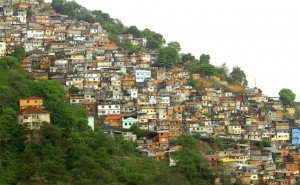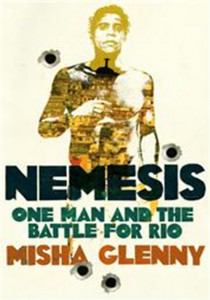
How an ordinary person becomes a Don in Rio’s favela



Rochina Favela’s drugs in Rio de Janeiro is the head of the drug cartel and the king of the notorious largest slum and the most wanted criminal in Brazil. Nemesis is the story of an ordinary poor man Antonio, but they called him Nem, who was hardworking young father forced to make a decision that would turn his world upside down. The man who tried to bring welfare and justice to a playground gang of culture and destitution, where everyone around him drew guns and partied. It is also tale of Drug lords with maths degrees, bend police, rich-kid addicts seeking drugs, Quixotic politicians, evangelical pastors and gold diggers.
Investigative journalist Misha Glenny’s Nemesis, a fast paced organised crime story which vividly describes the sprawling favelas and its charismatic drugs lord Antônio Francisco Bonfim Lopes, also known by his sobriquet ‘Nem of Rocinha’, through whom to tell this terrible yet fascinating history.
Stefan Zweig was overwhelmed by the city’s magnificent landscape and architecture when he first arrived in Rio de Janeiro in 1936, which was ‘one of the most powerful impressions of my whole life’. In his Brazil: Land of the Future Zweig, believed the country to be the embodiment of ‘future civilisation and peace in our world’.
Over 70 years later Brazil held the world’s worst record for homicidal violence: for every ten people killed, one was a Brazilian. Rio, the cidade maravilhosa (marvellous city), still retains its beauty despite being hemmed in by favelas. The capture of Nem in the early hours of November 2011, by heavily armed special forces “Bope” and the pacification of Rochina favela, soon after the police driving out the armed traffickers who had terrorised the 100,000 residents of the community. Glenny’s granular account showing how the drug trade enslaves both the addicts and the traffickers for year to come.
Rochina became the centre of Rio’s cocaine trade, located in the proximity of wealthier neighbourhoods of Leblon, GAvea and Sao Conrado. In 1980, the organised crime thrived in the favelas, as Brazil diverted Europe bound shipments of cocaine to cater to its local markets. Between 1980 and 1995 Drug violence became uncontrollable and Rio’s organised crime murder rate rocketed to 71 people per 100, 000 inhabitants compared to UN estimated global average of 6.2 .
Nem, a former honest office worker dragged into the trade in 2000, when he borrowed R$ 20,000 ( £3,400) from Lulu, the don of Rochina at that time, to pay for his daughter’s treatment for a serious medical ailment. Nem became the natural successor after BOPE officers ambushed the Don in 2004. The innocent family man was forced to learn the ropes fast and adopted gang culture as no banks or finance organisation came to his aid and retirement is not an option. When he became the Don of Rochina he ditched his first wife and married a young glamorous blonde beauty Danubia, named after rive Danube. Seven years after his regime, one day he was returning from a funk party in the neighbouring Vidigal, which was ambushed by some police who were not bribed, and in the ensuing shoot out some of his men took refuge in the five star Hotel Intercontinental in chic Sao Conrado, where hostages were taken and created a national scandal. As a true Don of organised crime in Brazil, although Nem is in a maximum security prison, no murders have been pinned on him directly. But the treatment of his former wife and girl friend, both of whom he has beaten badly – shows how Nem’s character has been transformed for the very survival of his new role.
Glenny compares the pacification of Rochina like the wider Brazilian economic miracle stalled by endemic corruption.
Nemesis: One Man and the Battle for Rio Misha Glenny
The Bodley Head, pp.352, £18.99, ISBN: 9781847922663

